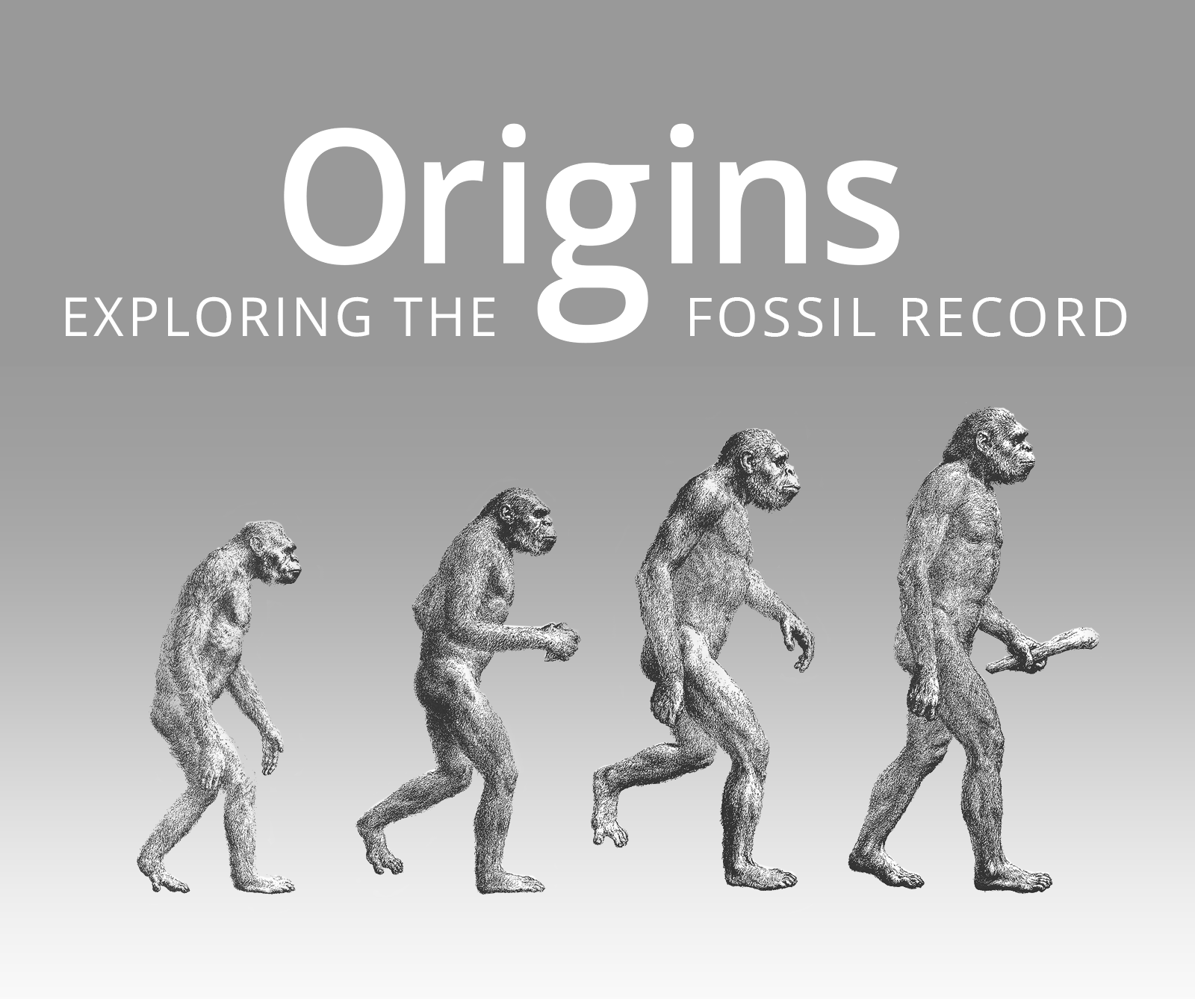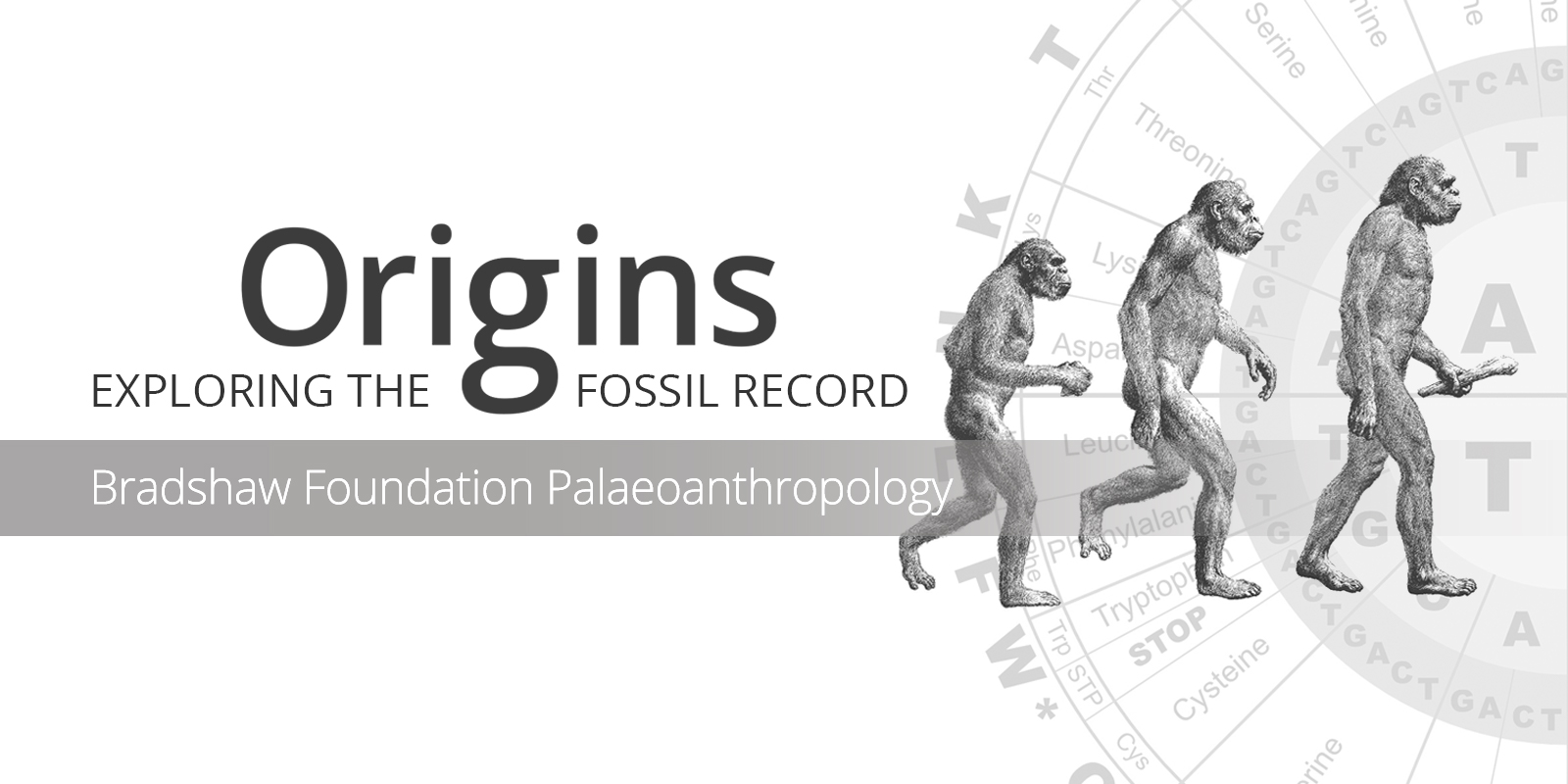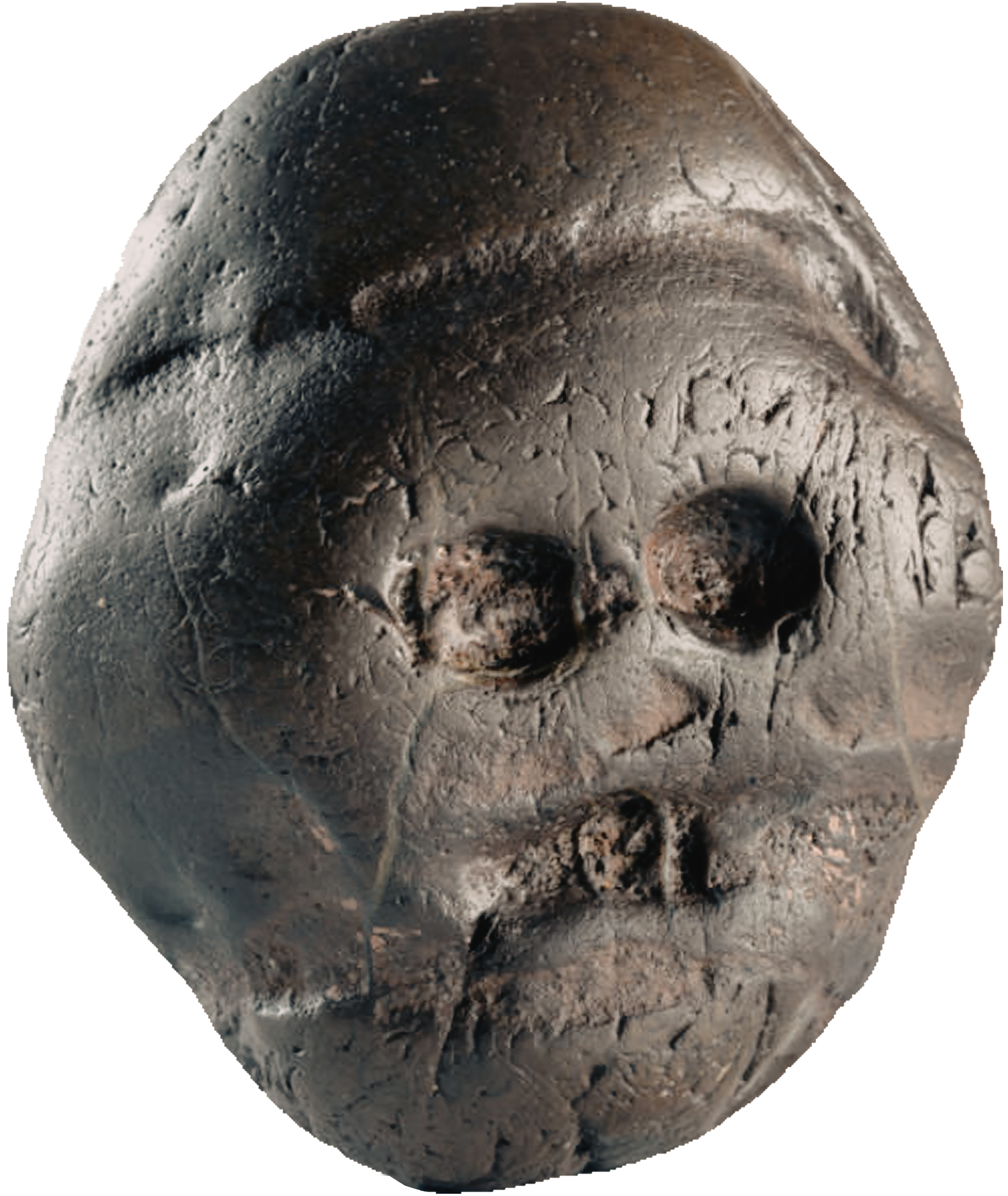The major task for the
Bradshaw Foundation is to promote the discovery, documentation and preservation of rock art around the world, but reference to the fossil record is important because in the realms of archaeology and palaeoanthropology, research reveals many traits of culture in the
hominin sequence, developing and varying over time and place. Moreover, research is revealing that these cultural traits, including art, are not exclusive endeavours of
Homo sapiens. We also now realise that the line between technical and artistic development has become somewhat blurred. The
ORIGINS section is an overview of an increasingly complex picture of hominin development based on past and current research and scientific consensus in order to provide a context for the rock art. As research continues around the world, this context - and the hypotheses that go with it - will without doubt require adjustment.
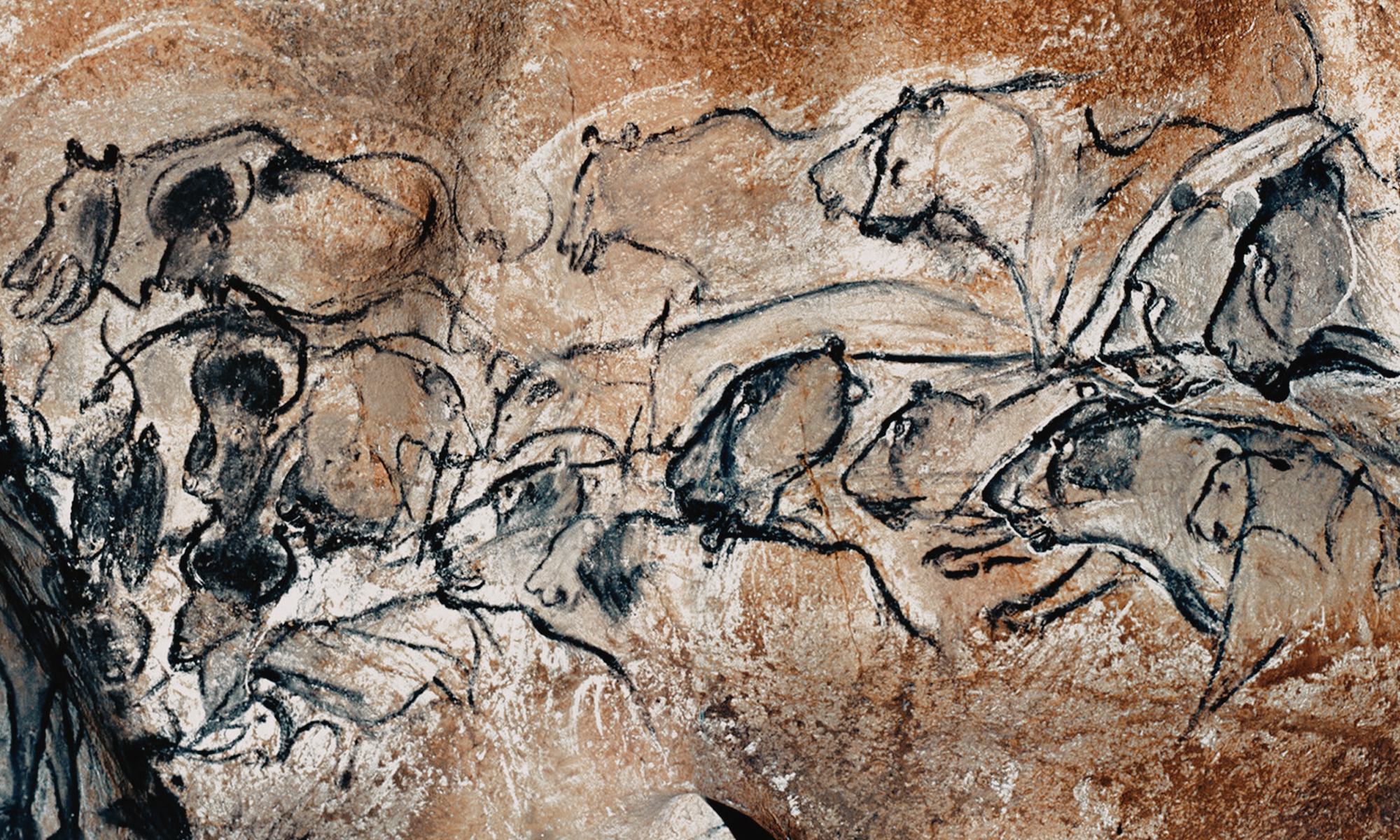
Cave paintings of Chauvet in France
The fundamental issues regarding human cultural and symbolic development are 'where', 'what' and 'when'.
Some point to the cultural explosion that occurred in Europe some 40,000 years ago, as demonstrated by the dazzling display of Aurignacian art such as that found in the
French caves of
Chauvet. This implies that Europeans were the first to speak, paint, carve, dress, weave and exchange goods. Others, however, provide evidence in Africa millenia before.
In Africa, Makapansgat is the site of the discovery of the Makapansgat pebble. This is a 260-gram jasperite cobble with natural chipping and wear patterns that make it look like a crude rendition of a human face. The pebble, found some distance from any possible natural source, was in the possesion of a female
Australopithecus africanus, an early hominid living between 3 and 2 million years ago. The pebble was not a manufactured object, but it was possibly recognized it as a symbolic face, and treasured as such. This would make it the oldest known sculpture, or manuport [a natural object which has been moved from its original context by human agency but otherwise remains unmodified] known.
The
Tan-Tan sculpture, discovered in ancient river deposits of the river Draa, Morocco, is between 500,000-300,000 years old. The overall shape of this little quartzite pebble, almost 6 cms in height, resembles a human figure but is entirely natural and unmodified by human action. Found near stone tools, it is possible that the pebble was simply collected and kept by someone who noticed its human shape. Examination under a microscope suggests this shape may have been emphasised by deliberate alteration of the natural grooves which run across the body. Is this a work of art or a curio?
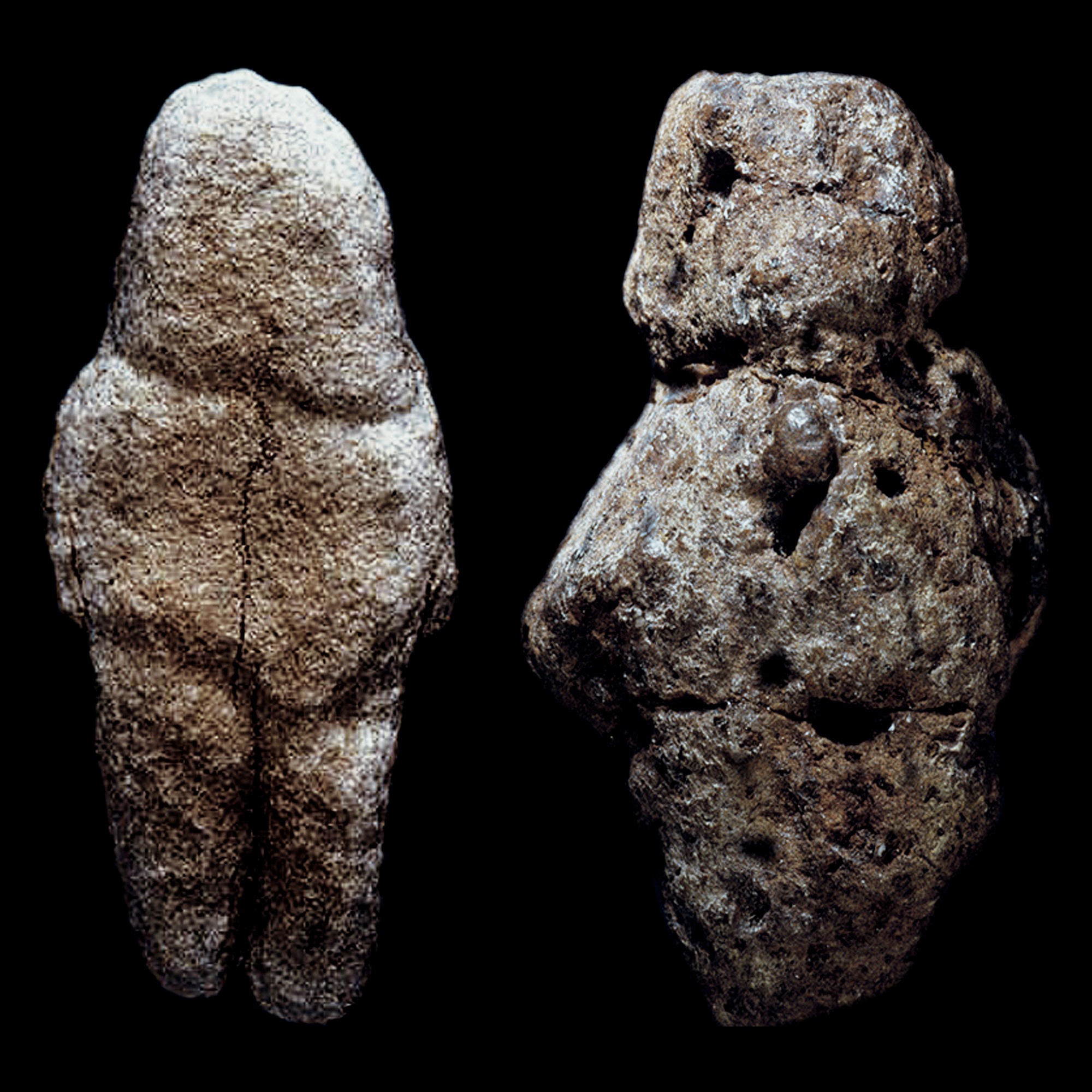
(Left:) Tan-Tan:
The oldest known human representation?
(Right:) Berekhat Ram:
Oldest known representation of a woman?
The
Berekhat Ram sculpture, discovered in the Golan Heights, Israel, is between 250,000-280,000 years old. It may be the oldest known representation of a woman. This tiny piece - only 3.5 cms in height - of volcanic scoria, reddened by heat and incorporating specks of charcoal does not immediately resemble a figurine. Largely natural, it is the groove around the neck and others on the sides which have been shown to be deliberate modifications absent from other scoria found in the area. The grooves accentuate the natural shape to suggest a human form which has been drawn as female. Does it represent curiosity or artistry on the part of the hand-axe makers of Berekhat Ram?
The Blombos ochre piece, from the
Blombos cave in
South Africa, is decorated with a delicate geometric pattern and has been dated conservatively at 77,000 years old. In fact, archaeologist Chris Henshilwood who found the ochre, believes it could be as much as 100,000 years old due to the more recent discovery of paint-workshop artefacts in the Blombos Cave.
The
cave paintings of Chauvet are belived to be up to 35,000 years old. Located in the Ardeche region of southern France along the bank of the river Ardeche near the Pont-d'Arc, this cave was only discovered as recently as 1994, happened upon by a small team of cavers led by Jean-Marie Chauvet. Chauvet Cave's importance is based on two factors: firstly, the aesthetic quality of these Palaeolithic cave paintings, and secondly, their great age. European Palaeolithic art developed over a period of 25-20,000 years and continued until the end of the last ice age, 11,000 years ago. But the art of this time in Europe was not restricted to the paintings and engravings found on the walls of caves. Portable art, though often under-represented, was prevalent during this period. Sculptures depicting human figures, animal figures and therianthropes [hybrid figures, usually a human figure with an animal head] have been discovered. The
Vogelherd Horse, discovered in Germany, is between 35,000 and 32,000 years old. The
Lion Man of Hohlenstein-Stadel, discovered also in Germany, is 32,000 years old. Of a similar age is The ‘
Dancing Figure’ of Galgenburg, discovered in Austria. The
Lespugue figurine, discovered in France, is between 24,000 and 22,000 years old.
In 2021, it was revealed that cave art in Spain was made by Neanderthals. Pigments on cave stalagmites in Cueva de Ardales were applied through splattering and blowing more than 60,000 years ago. The dating suggested the art was at least 64,800 years old, made at a time when modern humans did not inhabit the continent.
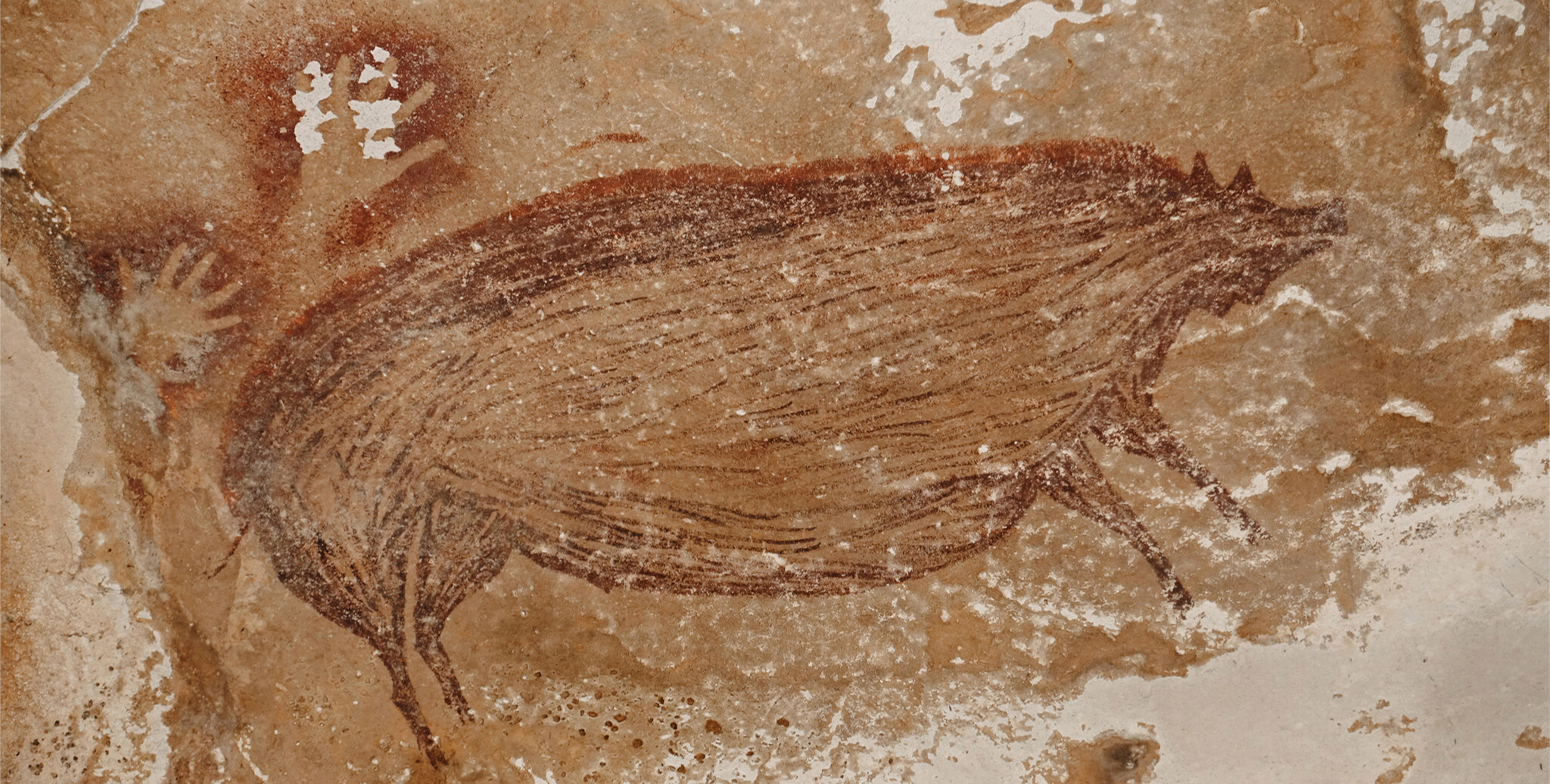
Painting at Leang Tedongnge in Sulawesi, Indonesia
In 2024, the oldest example of figurative cave art was discovered on the Indonesian Island of Sulawesi by Australian and Indonesian scientists. The painting of a wild pig and three human-like figures is at least 51,200 years old, more than 5,000 years older than the previous oldest cave art. According to Maxime Aubert from Griffith University in Australia the discovery pushes back the time that modern humans first showed the capacity for creative thought.
The Leang Tedongnge cave is located in a remote valley enclosed by sheer limestone cliffs, about an hour’s walk from the nearest road. It is only accessible during the dry season because of flooding during the wet season.
Measuring 136cm by 54cm (53in by 21in), the Sulawesi warty pig was painted using dark red ochre pigment and has a short crest of upright hair, as well as a pair of horn-like facial warts characteristic of adult males of the species. There are two hand prints above the pig’s hindquarters, and it appears to be facing two other pigs that are only partially preserved, as part of a narrative scene. Co-author Adam Brumm explains that “The pig appears to be observing a fight or social interaction between two other warty pigs.”
The
ORIGINS section is an overview of an increasingly complex picture of hominin development based on past and current research and scientific consensus in order to provide a context for the rock art. As research continues around the world, this context - and the hypotheses that go with it - will without doubt require adjustment.

